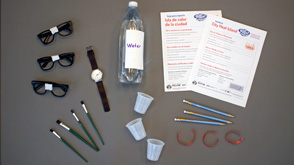City Heat Island
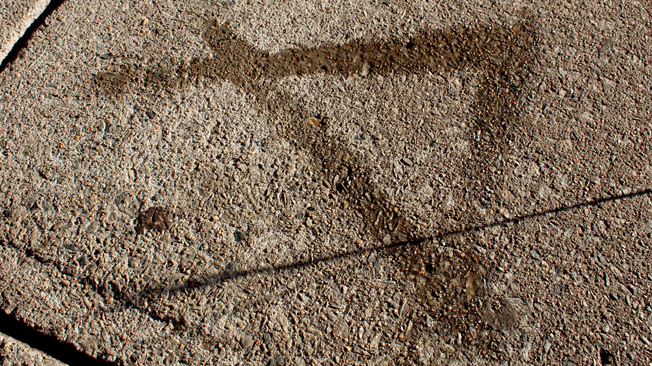
What Is This Activity?
Why are cities warmer than their surroundings? It's called the urban heat island effect. Kids compare how artificial and natural surfaces absorb sunlight, investigate how shade and sunlight affect temperature and evaporation, and hunt for places where animals can beat the heat.
Introduction
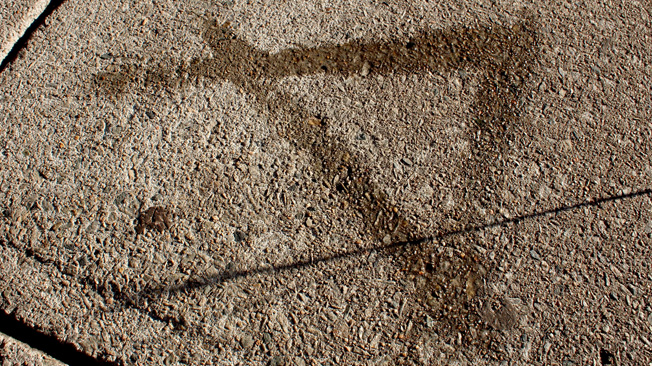
Learning Goals
Big Science Idea:
- Heat builds up in a city or town when a lot of surfaces absorb sunlight.
Skills kids will use to investigate the idea:
- Observe how shadows form and change shape and size when an object moves
- Predict, observe, compare, and gather data on the temperatures of surfaces to draw conclusions relating to city heat island effect (shaded areas are cooler than sunlit areas; pavement is hotter than grass or soil)
- Communicate and explain how the heat island effect impacts plants and animals; discuss solutions to this problem
How Do You Get Ready?
- Read the activity and gather the materials.
- Review the "City Heat Island" handout, make three copies, and scout out a space with the three locations it describes: sunny and shady areas of pavement that are near each other, sunny and shady areas of grass or soil that are near each other, and human-made objects (such as fences, benches, playground equipment, etc.) near grass, trees, or bushes.
- Troubleshoot any safety concerns (traffic, poison ivy, sharp objects, etc.).
- Identify and mark with a ribbon the three locations. At the first location, set out cups of water and paintbrushes.
- If you don't plan to show the "Cook an Egg!" video that is paired with this activity on the website, watch it ahead of time and note key concepts to share with kids during the activity.
Warm-up 8-10 minutes
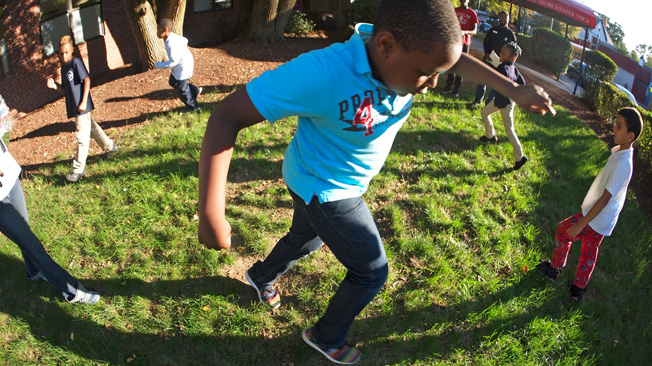
(Science Skills: Observe how shadows form and change shape and size when an object moves)
Shadow Play! Kids explore shadows and shade while playing a Heat vs. Cool tag game.
- Let kids play at making shadows for a few minutes outdoors. Can they make them longer, shorter, into shapes, fast-moving? Can they hide their shadows or make them fainter? How does playing in the sun feel different than in shade?
- Form Shadow Play teams: Give three kids ("Team Heat") sunglasses or bandanas (optional), or have them keep their hands on their hips as they run. They represent sunlight. The rest of the kids ("Team Cool") represent the shade.
- On your signal, Team Heat tries to "scorch" Team Cool players by stepping on their shadows. A scorched player jumps up and down in place until a teammate touches their shadow with his or her own. Give the kids five minutes to play. If everyone on Team Cool is scorched, and there's no one left to tag, Team Heat wins. If time runs out first, Team Cool wins.
- Ask: What makes a shadow? (An object, such as a person, blocks a source of light, such as the sun or a streetlight.) Why do shadows move and change? (The object moves, changes shape, or steps out of the light into the shade.) What's different about a shady area compared to a sunlit one? (Shady areas are darker and cooler.)
- For older or more mature kids: Ask: What else changes shadows? (Shadows also change when the light source changes—i.e., the sun crosses the sky during the day or is blocked by clouds.)
Activity 30-45 minutes
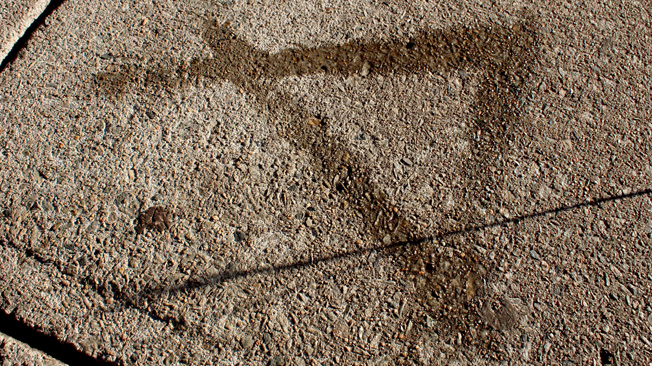
Too Hot to Handle?
(20-25 minutes)
(Science Skills: Predict, observe, compare, and gather data on the temperatures of sunlit and shaded surfaces and natural and human-made surfaces)
- Ask kids if they think a sunlit sidewalk could get hot enough to cook an egg. Take a show of hands and encourage them think about and discuss the idea.
- Have them feel sunlit asphalt (or concrete) pavement and sunlit grass. Which feels cooler? Explain that when the sun shines on flat, dark, solid surfaces, they heat up much more than grass. Point out that, on a sunny day, tar roofs and dark asphalt can be 90 degrees hotter than the air temperature!
- Introduce the term heat island: Buildings and pavement absorb heat, making cities hotter than places with fewer of these. Have you noticed that cities tend to be warmer than the areas that surround them? Why is that? Listen for ideas and revisit this question in the Wrap-Up.
- Have kids make identical water drawings directly on sunny and shaded sections of pavement. They can draw their initials or a simple design with the brushes and water. Ask them to predict what will happen to the drawings. They will check them later.
- Divide kids into three groups and give each group a "City Heat Island" handout, a pencil, and a thermometer (optional). Groups will measure temperature differences between the sunny and shady spots, and different surfaces in different places. Assign each group to a location. After five minutes, tell them to rotate to the next location, and then, after five more minutes, to their third location.
- Possible option for younger kids who can't read: Change this simple activity into an open-ended contest to find the hottest spot in the area, using touch to find the top three candidates and thermometer readings to choose a winner.
- Gather as a group and compare results. Which was the hottest surface you touched or measured? The coolest? Any surprises or differences between groups? (Kids may notice a large difference between sun and shade on pavement, less so between sun and shade on grass. Human-made objects might be hotter than natural ones, depending on the materials.)
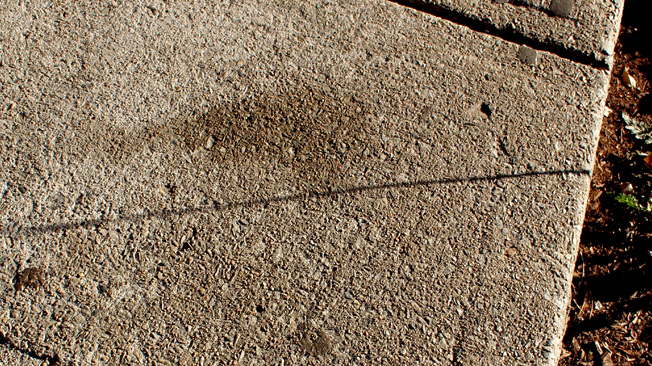
What about the Water?
(10-15 minutes)
(Science Skills: Communicate and explain how heat affects plants and animals and how they respond)
- If it is warm enough, have kids freely tag each other's shadows in a sunny area to work up a sweat. Add sprint races, if needed. Ask them to blow on their sweaty arm, use the handout to fan their faces, or stand in the breeze. Ask: How does your arm or body feel? If it is too cool, just have kids discuss how they think their arm might feel in the air.
- Introduce the term evaporation, when a liquid changes into a gas. Water turns into water vapor in the air. It doesn't disappear; it just becomes invisible. Heat and moving air both speed up the process.
- Explain that evaporating sweat carries heat away, making people feel cooler. Ask: Remember the cool grass? What keeps it cool? (Moisture in the soil evaporates. Grass transpires—a plant version of sweating.)
- Check the water drawings. Ask: What happened? (Those in the sun dried up more than those in the shade.) Where did the water go? (Dried up, or evaporated.)
- For older or more mature kids: Ask them to think about ways they could keep a puddle from drying up as long as possible on a very hot day.
- Discuss: Besides sweating, how do people keep cool in the summer? (Have an icy drink, go for a swim, turn on air-conditioning, wear light clothing, stay in the shade, etc.) How can animals beat the heat? (Seek shade under tree leaves, bushes, and other objects; pant out hot air in their breath; burrow underground; drink from a puddle or park fountain, etc.)
Wrap-up 5-10 minutes
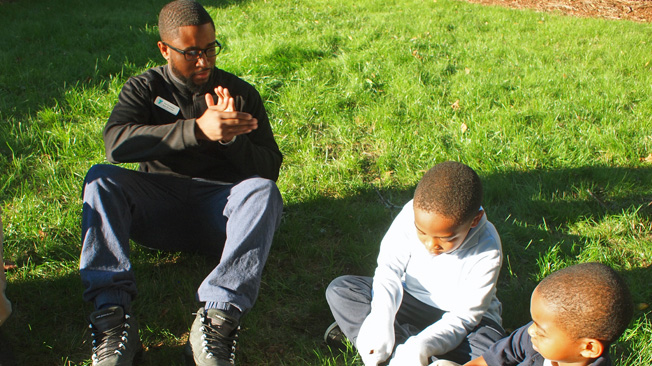
(Science Skills: Communicate and explain how the heat island effect impacts plants: discuss solutions to this problem)
- Discuss: What did you like about today's activities? What did you learn about shadows?
- Ask: What causes the heat island effect? (Cities and towns have lots of pavement and buildings that absorb heat and lots of vehicles, machines, and people that give off heat.)
- Discuss a solution: What can we do to cool off cities or protect wildlife? If kids struggle to think of solutions, suggest ideas to discuss, preceded with: "What if we …" Create more green spaces? Build more ponds and fountains? Use materials that don't absorb a lot of sunlight? Plant trees for shade?
- If you haven't already, send home the "Explore Weather Around You" handout to provide families with ideas on how to continue investigating weather together.
Explore Some More
Pavement Map
Map the green spaces within a couple of blocks. Guiding questions:
- Is there more pavement or grass? Roughly how much more?
- How many steps does it take to walk from one green space to another?
- How would you change the area to reduce the heat island effect? (Plant shade trees, turn a sidewalk section into a grassy or flower patch, make a community park out of an empty lot, grow a lawn or garden on rooftops, etc.)
Race for Cover
With paper and pencil to make a list, have kids race around your outdoor area to see who can find the most spots for animals to find relief from the heat. Remind them that insects, spiders, and other small critters are animals. Guiding questions:
- Where can animals go? What might they do to cool off?
Explorer's Notebook
Use the template provided: Give kids a few minutes to write and sketch about today's activity. They should add the data they collected about surface temperatures. Guiding questions:
- Which surfaces heat up our city or town? Which surfaces keep it cool?

